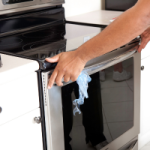April 2024
It takes planning to reduce your tax, and June 30 is only 10 weeks away.
Yep.
There is no point calling your accountant in the last week of June and asking for ideas. And you don’t want to be sitting in front of them in July and having them sigh and shake their head slowly and say, ‘We should have talked about this months ago.’
Property is our thing, and we have been doing Depreciation Schedules for over 20 years, but some obvious other planning things to consider are opportunities like the concessional contribution to super. Have you maxed out yours? Many people think only those with self managed super funds have any latitude with super.
Are there expenses for next year you can prepay this year? Payment for council rates, interest, strata fees, insurance and other things can be brought forward. This is especially useful for people who expect to earn less next year.
As for property related opportunities, are there niggling maintenance and repair issues you can deal with now? New Assets you can purchase to take advantage of the generous Low Value Pool rates? They’re the things we’ll look at now in depth.
And of course, whether you have an up to date Depreciation Schedule. If you want to make an enquiry about a new Depreciation Schedule for a residential or commercial property, call us on 1300660033, or enquire online.
Then way down the bottom, we’ll note the things the ATO is looking out for this year.
 When is a repair not a repair?
When is a repair not a repair?
When it’s an improvement.
Repairs can of course be claimed as a 100% immediate deduction, but the ATO’s definition of a repair is different from yours.
To the ATO, a repair means work you have done to rectify damage that has occurred while YOU were renting out the property. The longer you have been renting out a property, the greater the scope to claim work as repairs.
Putting through a large repair claim after only renting out a property for a year or so will likely prompt a ‘please explain’ letter.
So if you can’t claim work as a repair, what do you do?
Claim it as an improvement and we’ll add it to your Depreciation Schedule free of charge. We do that all the time for our clients. All you do is send us an email telling us what you did, when, and what it cost – we don’t need receipts.
You can also bring forward any maintenance work and do it this year if the deductions would be more helpful this year – no point spending money in July if you could have spent it, and then claimed it, in May or June.
We have written about repairs more extensively here.
 Now is the time to buy new Assets.
Now is the time to buy new Assets.
When we say Assets, we are referring to things that can be depreciated quickly.
Assets are things like blinds, floor coverings, fans, appliances etc.
If you buy an Asset for your rental property costing less than $300, you claim the whole cost immediately. So if you have something you think might need to be replaced soon, bring that forward and do it before June 30 so you claim that cost back sooner.
For Assets costing between $300 and $1,000, there is the Low Value Pool. Assets depreciated in the Pool get written off quickly.
In the first part year, you can claim 18.75% of the installed cost of that Asset. And a part year can be as little as a few days. So an Asset bought and installed on, say, June 28 will depreciate at 18.75% in just those two days. Then in the following full year, the reduced value of the Asset can be depreciated at 37%.
You can find some more expansive information on the Low Value Pool here.
 Things the ATO are looking out for this year.
Things the ATO are looking out for this year.
The ATO doesn’t need to look as hard these days for people doing the wrong thing because more and more information comes to them automatically.
Airbnb and other short term rental platforms now pass on income details for hosts to the ATO so the ATO can make sure it is declared.
And banks are now required to collect information on 1.7 million residential property loans and pass that information on so it can be compared to taxpayer claims.
The ATO these days knows a lot about you and every year they know more. Sneak the wrong stuff into your recycling bin? They’ll be onto that. Jaywalking? Yep, they’ll know.
Having an accountant can insulate you in part from scrutiny, as can getting a Depreciation Schedule that is ATO compliant from a provider, like us.
 Make a no-obligation enquiry online or call us on 1300 660 033 and rely on our 20-plus years of experience in estimating depreciation returns.
Make a no-obligation enquiry online or call us on 1300 660 033 and rely on our 20-plus years of experience in estimating depreciation returns.




 How do we approach a depreciation schedule for a fitout?
How do we approach a depreciation schedule for a fitout? What if your client has bought a building with an existing fitout?
What if your client has bought a building with an existing fitout? How best to deal with a landlord contribution?
How best to deal with a landlord contribution?

